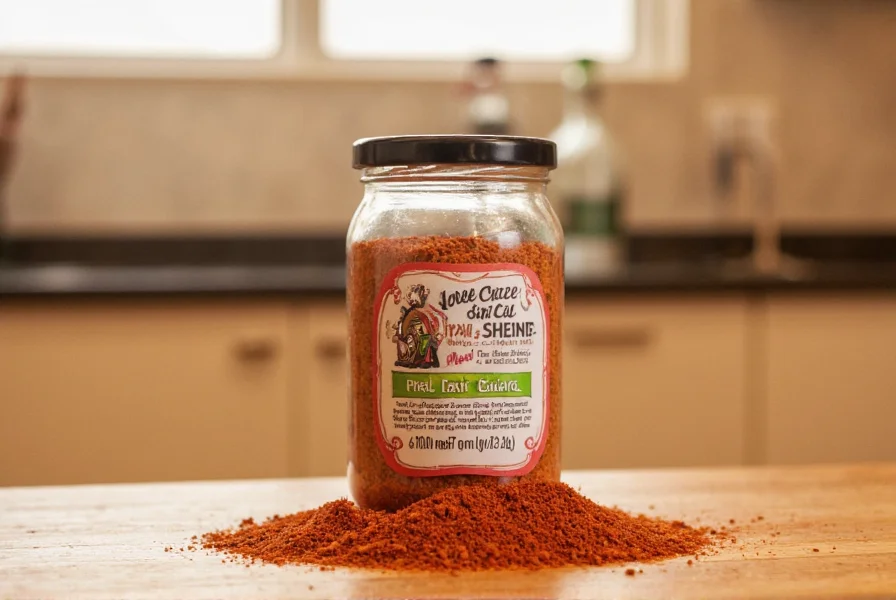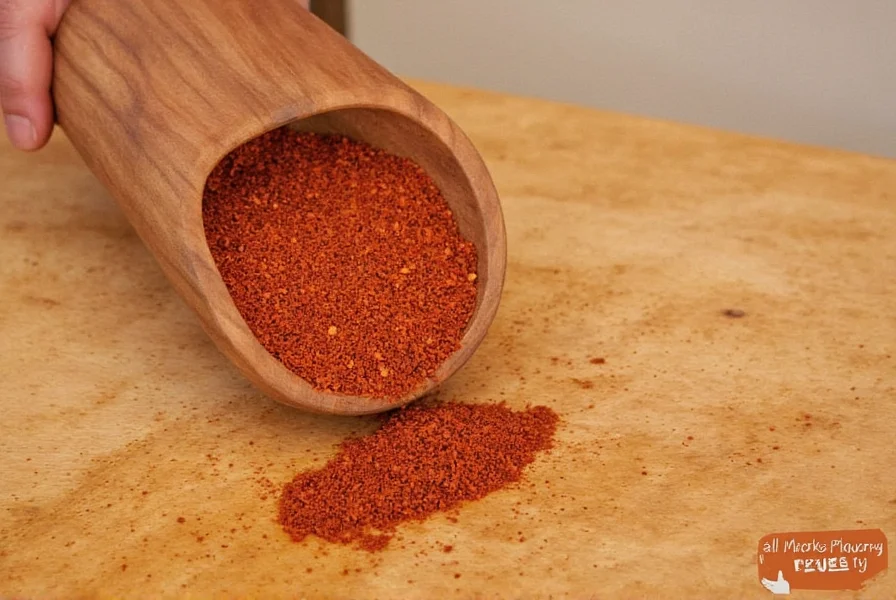Piri Piri Spice Blend: The Fiery Flavor That’s Taking the World by Storm!
Spice lovers, gather round! If you’ve ever bitten into a dish that made your eyes water and your taste buds sing, there’s a good chance it contained one of the most vibrant and beloved spice blends in global cuisine — the piri piri spice blend. Whether you’re grilling chicken on the weekend or spicing up your weeknight stir-fry, this African-born firestarter is a must-have in your pantry.
In this deep dive into the world of piri piri, we’ll explore its roots, break down its flavor profile, share expert tips for using it at home, and help you pick the best store-bought or homemade options. So grab your apron (and maybe a glass of milk), and let’s get spicy!

Table of Contents
- What Is Piri Piri Spice?
- History & Origins
- Flavor Profile & Ingredients
- How to Cook With Piri Piri
- Buying Guide
- Make Your Own Piri Piri Blend
- Global Influence
- Conclusion
What Is Piri Piri Spice?
The term "piri piri" refers both to the fiery chili pepper (Capsicum frutescens) native to Africa and the spice blend named after it. Known as bird's eye chili in some regions, piri piri is small in size but massive in heat and flavor.
While traditionally associated with Portuguese cooking due to colonial ties, the piri piri spice blend has become a global phenomenon. From grilled meats to sauces and marinades, this blend brings bold, smoky, and citrusy notes to any dish it touches.
A Spicy Tale: History & Origins
The story of piri piri begins in Central and East Africa, where locals first cultivated the tiny yet potent peppers. When Portuguese explorers came to Africa during the 15th and 16th centuries, they encountered these chilies and brought them back to Europe and beyond — particularly to India, Southeast Asia, and Brazil.
Over time, the Portuguese adopted the spice wholeheartedly into their culinary traditions, especially in dishes like frango piri-piri, a chargrilled chicken dish marinated in garlic, lemon, olive oil, and — you guessed it — piri piri spice. Today, piri piri is a cornerstone of Mediterranean, South African, and even British street food culture thanks to chains like Nando’s bringing it into mainstream popularity.
Flavor Profile & Core Ingredients
What makes piri piri spice so unique isn’t just the heat — though it packs a punch at around 50,000–100,000 Scoville Heat Units (SHU) — but its complex flavor layers. Here’s what you can expect from a classic piri piri spice blend:
- Piri piri chili: Adds intense heat and fruity undertones
- Garlic: Brings depth and earthiness
- Lemon zest or citric acid: Brightens the overall flavor
- Paprika: Provides mild sweetness and color
- Black pepper: Offers a background kick
- Oregano or thyme: Herbal complexity
- Salt: Balances all elements
| Ingredient | Role in the Blend |
|---|---|
| Piri piri chili | Primary source of heat and fruity base note |
| Garlic powder | Earthy depth and savory backbone |
| Lemon zest | Freshness and brightness |
| Paprika | Mild sweetness and red hue |
| Black pepper | Sharp contrast and added warmth |
| Dried herbs | Floral and woody complexity |
| Salt | Enhances and balances flavors |

How to Cook With Piri Piri: Tips, Tricks, and Recipes
If you’re new to piri piri, here are five foolproof ways to incorporate it into your kitchen without burning your mouth off — or worse, your guests’ palates!
1. Use It as a Dry Rub
One of the easiest and most effective ways to use piri piri is as a dry rub for meats. Simply coat chicken, pork, or shrimp with olive oil, then sprinkle on a generous amount of the spice blend before grilling or roasting.
2. Make a Signature Marinade
Mix the spice with crushed garlic, olive oil, lemon juice, and a touch of vinegar for a powerful marinade that infuses meats with bold flavor. Let sit for at least 1 hour (or overnight) before cooking.
3. Spice Up Vegetables
Vegetables like bell peppers, eggplant, and mushrooms love piri piri. Toss them in olive oil and dust with the spice before roasting or grilling for an exotic side dish.
4. Stir Into Sauces and Dips
Add a pinch to tomato-based sauces, mayonnaise, or aioli for a zesty kick. Perfect for burgers, sandwiches, or dipping fries.
5. Create a Global Fusion Dish
Use it in non-traditional recipes like tacos, pasta sauces, or popcorn seasoning for a surprising twist. Just remember: a little goes a long way!
Buying Guide: Choosing the Best Piri Piri Spice Blend
With dozens of brands flooding the market, how do you choose the right piri piri spice blend for your needs? Here’s a breakdown of things to look for, along with a few top picks based on different criteria:
| Brand | Features | Best For | Recommended Use |
|---|---|---|---|
| Nando’s PERi-PERi Seasoning | Pre-ground, balanced heat level, comes in mild to extra hot | Beginners and fans of Nando’s restaurants | Marinades, dips, and quick meals |
| Badia Piri Piri Seasoning | Simple ingredient list, no preservatives | Health-conscious cooks | Rubs and vegetable dishes |
| Spicewalla Piri Piri Powder | Authentic African-Portuguese flavor, premium quality | Cooking enthusiasts and purists | Traditional dishes and gourmet creations |
| Trader Joe’s African Bird Pepper Blend | Unique blend with smoked paprika and herbs | Adventurous eaters | Grilling, barbecue, and fusion cuisine |
Things to Look For When Buying
- Heat Level: Check Scoville ratings or labels like “mild” or “extra hot”
- Ingredients: Avoid unnecessary additives or artificial flavors
- Whole vs Ground: Whole piri piri peppers allow more customization; ground is ready to use
- Packaging: Airtight containers preserve freshness and potency longer
- Reputation: Trusted brands tend to offer consistent flavor and quality
DIY Time: How to Make Your Own Piri Piri Spice Blend
If you’re feeling adventurous (or want full control over the heat level), making your own piri piri spice blend is surprisingly simple. Here’s a tried-and-true recipe:
Homemade Piri Piri Spice Recipe
- 8–10 dried piri piri chilies (adjust for desired heat)
- 2 tsp garlic powder
- 1 tsp smoked paprika
- 1 tsp dried oregano
- 1 tsp black pepper
- 1 tsp salt
- Zest of 1 lemon (optional)
Instructions
- Toast the dried chilies in a dry skillet for 1–2 minutes until fragrant.
- Let cool, then remove stems and seeds if less heat is preferred.
- Grind everything together using a spice grinder or mortar and pestle.
- Store in an airtight jar away from direct sunlight.
Pro Tip: Add a clove or two of dried lemon peel during grinding for a tangy finish.

Global Influence: Piri Piri Around the World
From Portugal to South Africa, and now even popping up in Korean BBQ joints in Los Angeles, the influence of piri piri spice continues to expand globally. Here’s how different cultures have embraced and adapted the spice blend:
- Portugal: Used in grilled chicken and seafood dishes
- South Africa: Popularized through fast-food outlets like Nando’s
- Brazil: Blended into sauces for grilled meats and feijoada
- India: Used sparingly in Goan-style dishes influenced by Portuguese colonization
- United States/UK: Trending in gourmet street food and fusion recipes
This adaptability is why piri piri remains one of the most exciting global spices today — versatile enough to complement a variety of cuisines while maintaining its signature heat and aroma.
Final Thoughts: Why You Should Keep Piri Piri in Your Pantry
Whether you’re a seasoned chef or a curious home cook, the piri piri spice blend deserves a permanent spot on your spice rack. Its dynamic mix of heat, citrus, and herbaceous notes makes it incredibly versatile across meat, veggies, and even desserts (yes, really!).
By choosing high-quality blends or crafting your own, you can bring a piece of global tradition into every meal. So go ahead — ignite your next dish with a dash of piri piri and let your taste buds travel the world, one spicy bite at a time.










 浙公网安备
33010002000092号
浙公网安备
33010002000092号 浙B2-20120091-4
浙B2-20120091-4